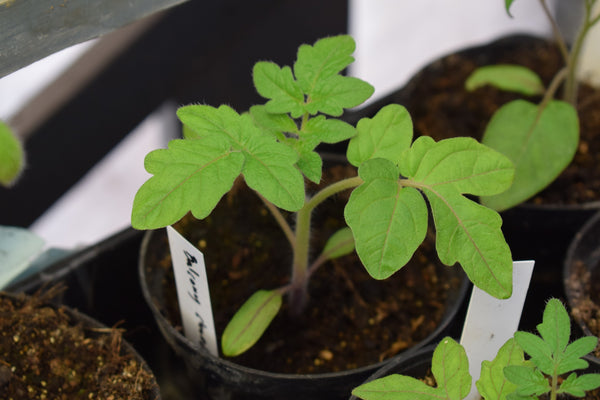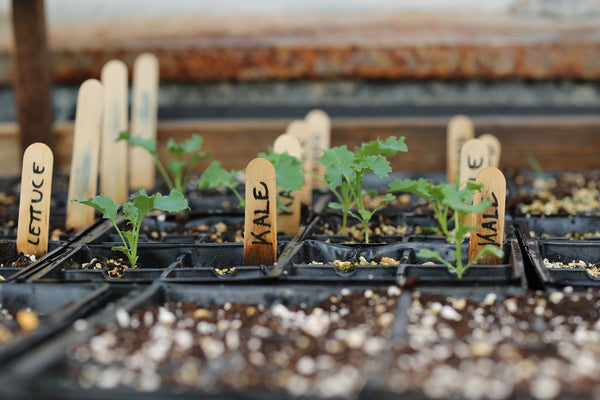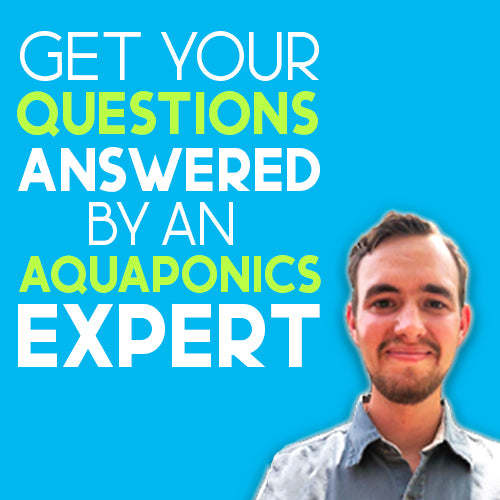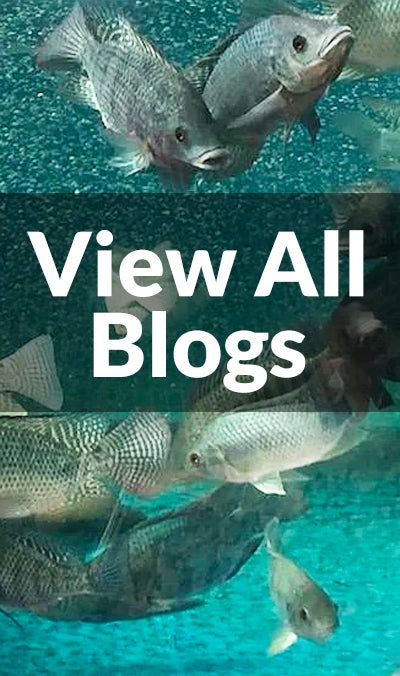In a world where sustainable practices are becoming increasingly important, technology and nature have given rise to innovative solutions for cultivating both food. One solution that is gaining popularity for its efficiency and environmental protection is aquaponics. Aquaponics offers a sustainable way to grow plants and fish in one recirculating environment.
Aquaponics not only conserves water but also produces nutrient-rich, organic produce year-round. If you're curious about delving into aquaponics, this article will provide the essential steps to start planting in aquaponics.
Planting in Aquaponics Systems
Plants play an essential role in maintaining the balance of an aquaponics system.
1. The Role of Plants in Aquaponics
While fish generate ammonia-rich waste as part of their natural metabolic process, this waste would accumulate and become toxic if not addressed. Enter the plants that work as the ultimate biofilters. Through a process known as nitrification, which transforms fish waste into nutrients for the plants.
Plants also provide oxygen to the water during photosynthesis, in which the fish benefit from the increased oxygen levels in the water, creating a mutually beneficial cycle. Plants also become the heart of the aquaponic system that cleans the water and creates a stable environment for the well-being of fish and plants.
2. Suitable Plants for Aquaponics
Almost all plants can be grown in an aquaponics system, but some thrive in specific aquaponics systems. So it is important to select plants that can thrive in the unique condition of your aquaponics system. Plants that thrive in aquaponics systems are:
- Leafy Greens: Varieties like lettuce, kale, spinach, and Swiss chard are well-suited for aquaponic environments.
- Herbs: Basil, mint, cilantro, and parsley can prosper in aquaponic systems. Their aromatic leaves not only contribute to culinary endeavors but also enhance the overall ambiance of your setup.
- Fruiting Plants: Tomatoes, peppers, and cucumbers can be cultivated in larger aquaponic setups. These plants require more nutrients and are best grown on established aquaponics systems.
Important Considerations Before Planting
- Planting Design: The layout of your grow bed will maximize your plant production in the available space. Before planting, choose wisely what plants you will grow, considering the space needed by each plant. Arrange your plants as you plant them in your grow bed, considering their nutrient demand, physical compatibility, and ease of access. A good practice is to plan the layout of your grow beds on paper to understand how everything will look.
- Plant Diversely: Plants are susceptible to diseases and parasites. If only one crop is grown, the chance for severe infestation is higher, which can unbalance the whole aquaponics system. That is why planting a diverse range of plants is encouraged.
- Staggered Planting: It is important to stagger planting so that there can be constant harvest and replanting, which will help maintain the balance of nutrient levels in the system. Staggered planting also provides a steady supply of plants on the table.
- Maximize Your Grow Bed Space: Maximize the surface area of your grow bed and the vertical space by planting vegetables with short grow-out periods, like salad green, and between plants with longer-term like eggplants or tomatoes. The benefit of this practice is that you can harvest the salad greens while providing more room for the eggplants to mature.

Preparing for Planting
Before the first seed or seedling finds its place in your aquaponic system, there are essential preparatory steps to undertake that lay the foundation for a thriving ecosystem and foster the optimal growth of both your plants and fish.
1 System Cycling
The journey of cultivating a successful aquaponic system begins with system cycling. This critical process involves jump-starting the establishment of beneficial bacteria colonies within your system. These bacteria play a crucial role in the nitrogen cycle.
2. Regular Water Parameter Testing
Maintaining balanced water parameters is essential to ensure the health of both the fish and the plants. Regularly testing for parameters such as ammonia, nitrite, nitrate, pH, and temperature helps prevent harmful spikes or imbalances that could stress the system. Keeping these parameters in check supports the growth of beneficial bacteria and ensures that plants have access to the nutrients they need.
3. Seedling vs. Seeds
Advantages of Seedlings: When it comes to planting in aquaponics, using seedlings (young plants) offers several advantages. Seedlings have already gone through the vulnerable germination phase and have established root systems, so they can immediately begin nutrient absorption and growth. This leads to faster overall plant growth and reduces the risk of failed germination.
- Sourcing Healthy Seedlings: Look for reputable nurseries or suppliers to source healthy seedlings. Healthy seedlings have vibrant leaves, sturdy stems, and well-developed root systems. Avoid plants that show signs of stress, disease, or pests.
- Starting from Seeds: While seedlings offer convenience, starting plants from seeds can be rewarding. It involves germinating seeds in a separate medium until they develop into young plants ready for transplanting. This method offers more control over the plant's early stages and can be cost-effective for large-scale setups.
Starting seeds involves:
- Placing them in a suitable germination medium.
- Providing consistent moisture and warmth.
- Ensuring proper lighting conditions.
- Once the seedlings are strong enough, they can be transplanted into your aquaponic system.
Planting Techniques in Aquaponics
Once your aquaponic system is cycled and your seedlings are ready, it's time to dive into the art of planting. Proper planting techniques are pivotal in ensuring plants thrive and contribute effectively to the symbiotic ecosystem.
1. Grow Media Selection
- Grow Media Options: The choice of grow media impacts plant growth and nutrient absorption. There are several options available, each with its unique characteristics. Common growing media include clay pebbles, gravel, lava rock, and expanded shale.
- Role of Growing Media: Grow media serves as the support system for plant roots within the aquaponic environment. They provide stability, aeration, and proper moisture retention. The grow media also host beneficial bacteria, further contributing to nutrient cycling by breaking down organic matter.
2. Planting Depth and Spacing
- Planting Depth: Different plants have varying root depth requirements. Shallow-rooted plants, such as leafy greens and herbs, should be planted at shallower depths, allowing their roots to access nutrients and water efficiently. Deeper-rooted plants like tomatoes may require a bit more depth. Planting at the correct depth ensures that roots receive the right balance of nutrients and oxygen.
- Importance of Plant Spacing: Proper plant spacing is crucial for optimal growth. Overcrowding can lead to competition for nutrients, light, and space, resulting in stunted growth and increased disease susceptibility. While adequate spacing promotes proper air circulation, reducing the risk of mold and fungal issues.
- Guidelines for Spacing: While specific spacing can vary based on plant size, species, and growth habits, some general guidelines can be followed. For instance, leafy greens like lettuce can be spaced about 6 to 8 inches apart, while larger plants like tomatoes may need around 18 to 24 inches spacing between each plant. Remember that vertical spacing should also be considered, especially for taller plants, to ensure that all plants receive adequate light.

Care and Maintenance
As your aquaponic garden takes shape, ongoing care and maintenance are paramount to sustaining a thriving ecosystem. From nutrient levels to environmental conditions, diligent attention ensures that plants and fish flourish harmoniously.
1. Nutrient Monitoring and Supplementation
- Maintaining Nutrient Levels: Consistently monitoring nutrient levels in the water is a cornerstone of successful aquaponics. Nutrient balance is essential for healthy plant growth and fish well-being. As plants absorb nutrients over time, regularly testing water parameters–including nitrates, ammonia, and pH–helps prevent deficiencies or imbalances.
- Signs of Deficiencies: Keep a watchful eye on your plants and fish for signs of nutrient-related issues. Yellowing leaves, stunted growth, or poor fruiting can show nutrient deficiencies, while burnt leaf edges or white deposits on plant roots might suggest nutrient excesses. Unusual fish behavior, like lethargy or erratic swimming, can signal water quality problems.
- Supplementing Nutrients: If nutrient deficiencies arise, addressing them promptly is essential. Organic and aquaponics-friendly nutrient supplementation methods include adding fish-safe, water-soluble fertilizers or employing techniques of adding worms in the grow bed. This approach supports a balanced nutrient cycle while minimizing the risk of overloading the system.
2. Light and Temperature Considerations
- Optimal Light Conditions: Light is vital to plant growth within an aquaponic system. Ensure your plants receive adequate light to fuel photosynthesis. The intensity and duration of light exposure can influence plant health and productivity. Different plants have varying light requirements, so it's crucial to research the needs of your chosen species.
- Sunlight and Artificial Lighting: If your system is outdoors, position it to receive sufficient sunlight. South-facing locations are often ideal, as they receive the most direct sunlight throughout the day. If natural light is limited, consider using artificial grow lights. LED or fluorescent lights can replicate sunlight and provide consistent illumination, ensuring plants receive the needed light.
- Temperature Management: Maintaining appropriate water and air temperatures is essential for the well-being of both fish and plants. Fish are cold-blooded and rely on external temperatures to regulate their body heat. Plants also have specific temperature preferences for optimal growth.
- Water Temperature: Ensure that the water temperature remains within the suitable range for your chosen fish species. Fluctuations in water temperature can stress fish and impact their health. Aerate the water to promote oxygen exchange and prevent temperature stratification.
- Air Temperature: For indoor systems, maintaining a stable air temperature is crucial. Avoid placing the aquaponic setup near heating or cooling sources that could cause rapid temperature changes. Monitoring and controlling the ambient air temperature helps create a consistent environment for plant growth.
Plant Harvesting Techniques in Aquaponics
As your aquaponic system evolves, the time will come to reap the rewards of your efforts–the delicious produce that has flourished within this dynamic ecosystem. However, harvesting is just one facet of the continuous care that ensures the long-term success of your aquaponic garden.
- Guidance for Harvesting: Harvesting produce from your aquaponic system requires a delicate touch to avoid disrupting the ecosystem. Gently remove leaves, fruits, or herbs without causing unnecessary stress to neighboring plants or disturbing the water environment.
- Using Clean and Sharp Tools: Clean and sharp tools are essential to prevent plant damage and maintain system hygiene. Dull tools can crush stems and leave jagged edges that invite disease. Keeping your tools sharp and clean ensures a clean cut and minimizes the risk of introducing pathogens into the system.
Aquaponics Plant Selection Tips
- Grow vegetables that you will eat.
- It is best to start a new aquaponics system with fast-growing plants with low nutrient demand, such as leafy greens, beans, or peas. After 2-3 months, you can plant larger fruiting vegetables such as tomatoes and strawberries.
- In deciding what vegetables to grow, choosing plant varieties that thrive in your climate and following the seasonal planting guide for your location is essential.
Tips on Transplanting Seedlings
- If you're planting into a new grow bed, planting seedlings rather than seeds is advisable. This is because seedlings will be able to start extracting the nutrients right away.
- Always remember that plants need plenty of space to keep them from competing for nutrients, so give them enough room to grow.
- Always be gentle when planting your seedlings. Roots are very sensitive, and a new plant might take a few days to settle into its new environment.
- Wash the soil out of the root system of the plants very gently because it may carry plant pathogens that can hurt your system.
- Structure your plantings so that large or tall plants like tomatoes are grown on the far side of the grow bed so that they will not cover or shade smaller plants.
- It is recommended to plant at dusk so young seedlings can acclimate to the new environment before the morning sun.
- It is best to stagger the planting to prevent harvesting the entire crop. Harvesting plants all at once will decrease the nutrient levels, which might create nutritional problems and stress for the fish. Staggered planting also allows for continual harvest and transplant of crops and helps ensure constant nutrient uptake and water filtration.
Media Bed Planting Tips
- Place seeds in separate media plugs and wait for them to grow to your desired sizes.
- Transfer your seedlings into the grow bed by pushing aside some media to make a small hole (about 5cm) and gently placing the seedling in it, with the roots in a downward position.
- Carefully cover the roots with media and, if necessary, use stakes or ties to support the seedling until the roots grow out of the plug to hold it up.
- When planting in your grow bed, plant densely, and you can plant a lot closer together than you would in soil because the plants will have as much water as they want.
- Try to make use of areas where plant growth can expand and extend. If your grow bed is near a wall or fence, erect something for the plants to grow up and plant climbers like beans, cucumber, or tomatoes.
NFT Planting Tips
- To grow plants in the grow pipes, you need to support the seedlings with a short pipe or net cup that contains 3-4 cm of growing media.
- It is best to fill the net cup with a mixture of media and a moisture-retaining medium like compost. The compost will help retain the moisture because the young plant roots only barely touch the water flow in the grow pipe.
- After a week, the roots should have extended out the net cup into the grow pipe with access to the water flowing inside the pipe.
- If necessary, wicks can be extended from the bottom of the net cup into the stream of water.
Raft Planting Tips
- Like planting in NFT systems,Raft systems need the plants to be supported using a small net cup filled with 3-4 cm of growing media and placed into the holes in the rafts on top of the water.
Plant Harvesting Tips
- Make sure to remove the entire root system when harvesting full plants. Leaving roots and eaves in the system can cause disease.
- Place the discarded plant roots into a compost bin to recycle plant wastes.
- Use a clean, sharp knife when harvesting.
- Ensure that the aquaponics water does not wet the leaves of the harvested plants to avoid bacterial contamination. Place the harvested plants into a clean container and wash them as soon as possible to maintain freshness.
Conclusion
Like anything worth having in life, an aquaponics system requires some work. It is a continuous project and an experiment. It evolves and grows, but it is worth it. There is no shortcut to harvesting fresh and healthy food in aquaponics. Still, if applied correctly, these tips should help you maintain a constantly rotating supply of fresh and pesticide-free vegetables for your family. Thank you for reading our tips; subscribe to our mailing list for more aquaponics updates.






Ben Oguh
June 23, 2022
Very educative, encouraging and generally very helpful. Thanks for the good job!